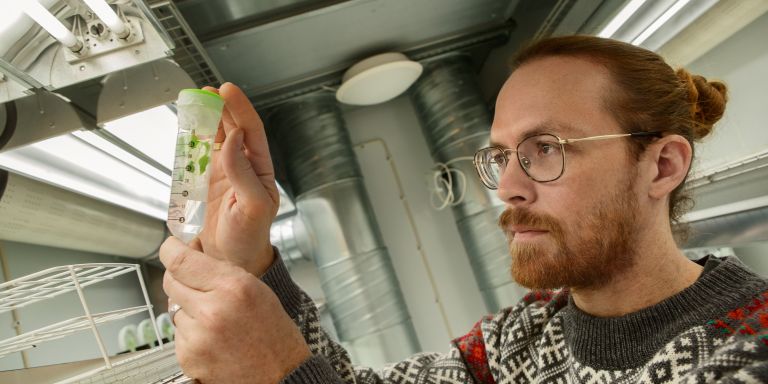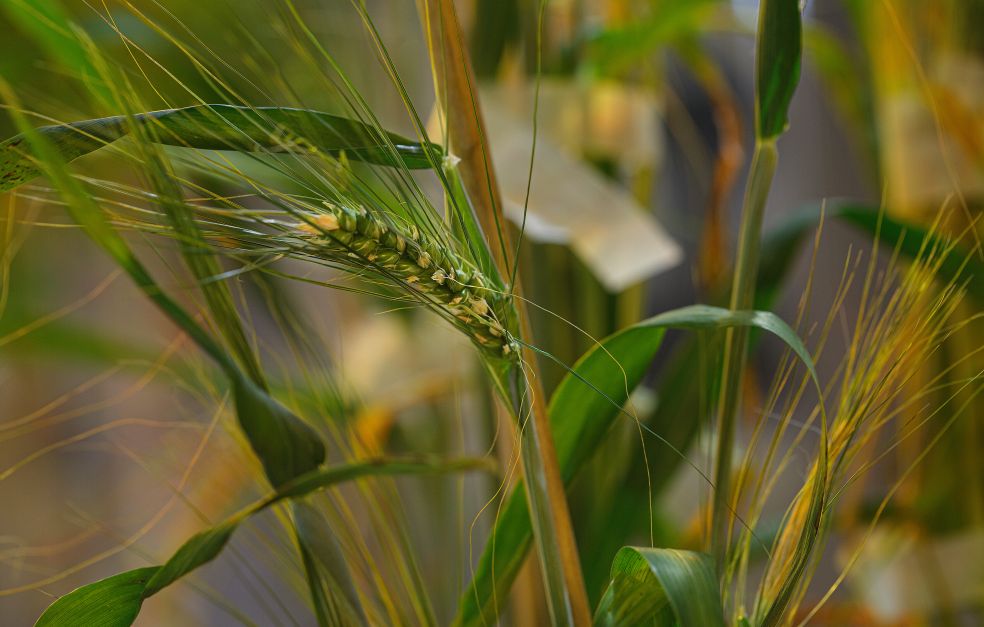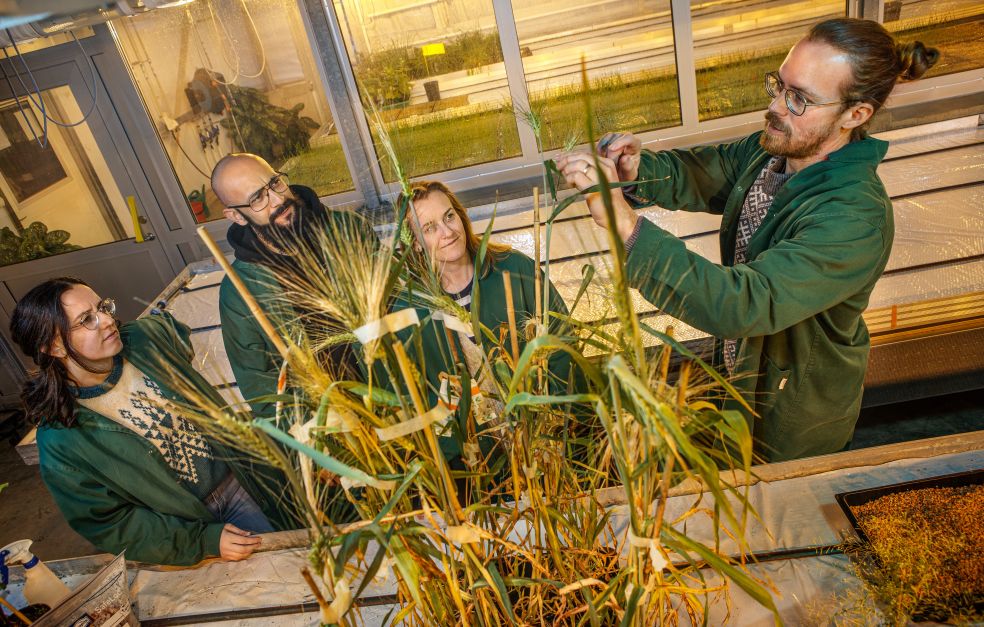Bacteria that thrive in leaves, roots and seeds may be beneficial to sustainable agriculture and forestry. Derek Lundberg is researching a genus capable of protecting crops, breaking down toxins, and promoting growth. He wants to obtain knowledge that may improve agriculture in a changing climate.
Derek S. Lundberg
PhD, Plant Biology
Wallenberg Academy Fellow 2021
Institution:
Swedish University of Agricultural Sciences, Uppsala
Research field:
How bacteria in the Sphingomonas genus are able to protect crops and increase their yield in a changing climate
It is Monday morning and Lundberg has just spent half an hour cycling along the Fyrisån river to his lab at the Swedish University of Agricultural Sciences (SLU), on the outskirts of Uppsala.
“My team was already there, and we examined microorganisms that we had cultured the previous weekend from plant material from barley. We were particularly interested by colonies of yellow and orange-colored patches that are typical of Sphingomonas, but we also need genetic confirmation that these are the bacteria at work,” he explains.
Sphingomonas are a group of bacteria that are plentiful in the natural environment, and often found on and inside plants. They seem to thrive best of all in leaves, roots and seeds. Multiple studies have shown that they can provide protection against pathogenic bacteria, break down toxins, or produce substances that promote plant growth.
“Even if we don’t find a bacterium to save agriculture, our genetic studies will yield knowledge that may help companies to produce more effective fertilizers. And if we can contribute to a completely new product, that will be a bonus.”
Rapid results in sustainable agriculture
Lundberg hopes to reveal Sphingomonas’ secret. He is studying several new variants of the bacteria to ascertain which parts of their DNA enable them to colonize plants and interact with other microorganisms. He will start by studying their interactions with barley (Hordeum vulgare), one of the most important cereal crops in Sweden. Later on he intends to examine how the bacterium is able to promote growth in poplar (Populus), which plays a key role in fiber and biomass production. He will also look at interactions with the tiny weed plant Arabidopsis thaliana, commonly used by plant scientists because it is so easy to grow and study in labs.
“When I find strains of bacteria capable of enhancing growth in barley and poplar, I will study how they work, both in a simulated environment in which climate change is occurring and under real-life conditions.”
In the future, our crops will be exposed to extreme weather conditions. They are also likely to face new diseases. Meanwhile, there is a need to increase crop yields to feed a growing population.
For thousands of years humans have improved crops by means of plant breeding. This is a tried and tested process, albeit a slow one.
Lundberg’s research centers on protecting the varieties we already have. His studies of bacterial DNA and ecology, and their interaction with their host plants will add to our understanding of the mechanisms that can be used to create a new generation of fertilizers for our crops.
“It’s much quicker than plant breeding, but we don’t yet know how the bacteria can help plants without themselves causing disease. Nor do we know how well they will do with crops in hot and bright arable conditions, where they have to compete with other microorganisms and resist the plants’ own immune systems.”
Lundberg also hopes to contribute to development of ecologically sustainable alternatives, which give better yields with fewer hazardous chemicals.
Early interest in bacteria
Lundberg grew up in North Carolina in the U.S., although his great grandparents are of Scandinavian origin. In high school he happened to read a book about the Ebola virus, which awakened his desire to study biology. He and many of his fellow students at university wanted to be doctors, but Lundberg was eventually attracted to plant research.
“You don’t face as many ethical quandaries if you kill plants,” he jokes.
Already as a PhD student he began studying bacteria living on roots.
“Sequencing had become less expensive, and I was able to use the method to identify the bacteria.”
In time he realized that bacteria and roots can derive mutual benefit. He also pondered how bacteria manage to signal to their host plants that they will not harm them. In 2014 he took up a postdoctoral position at the Max Planck Institute of Development Biology in Tübingen, Germany. There he became increasingly interested in studying bacteria in leaves.
Lundberg had previously visited SLU in Uppsala for a collaboration, and in 2021 accepted an offer to research there as a Wallenberg Academy Fellow, setting up his own team at the Department of Plant Biology.
“SLU is an ideal base for my research, since it gives me access to world-class infrastructure and expertise.”
By March 2022 he had settled in and begun to buy equipment. That spring he recruited two postdoctoral researchers and a PhD student. During the summer he was out in nature close to Uppsala collecting leaves and roots bearing the bacteria he wanted to study.
“I want to use Swedish rather than German or other bacteria. The goal is, after all, to find out how bacteria can help Swedish crops. I want to study bacteria that I know can thrive here.”
Text Carin Mannberg-Zackari
Translation Maxwell Arding
Photo Magnus Bergström






